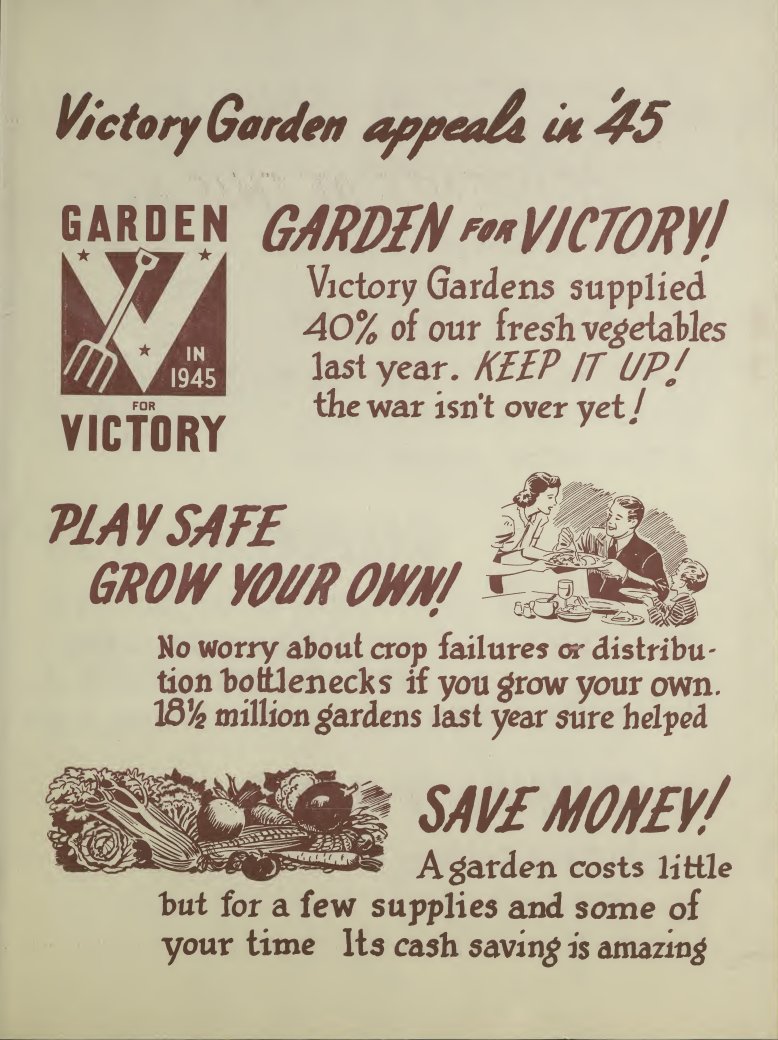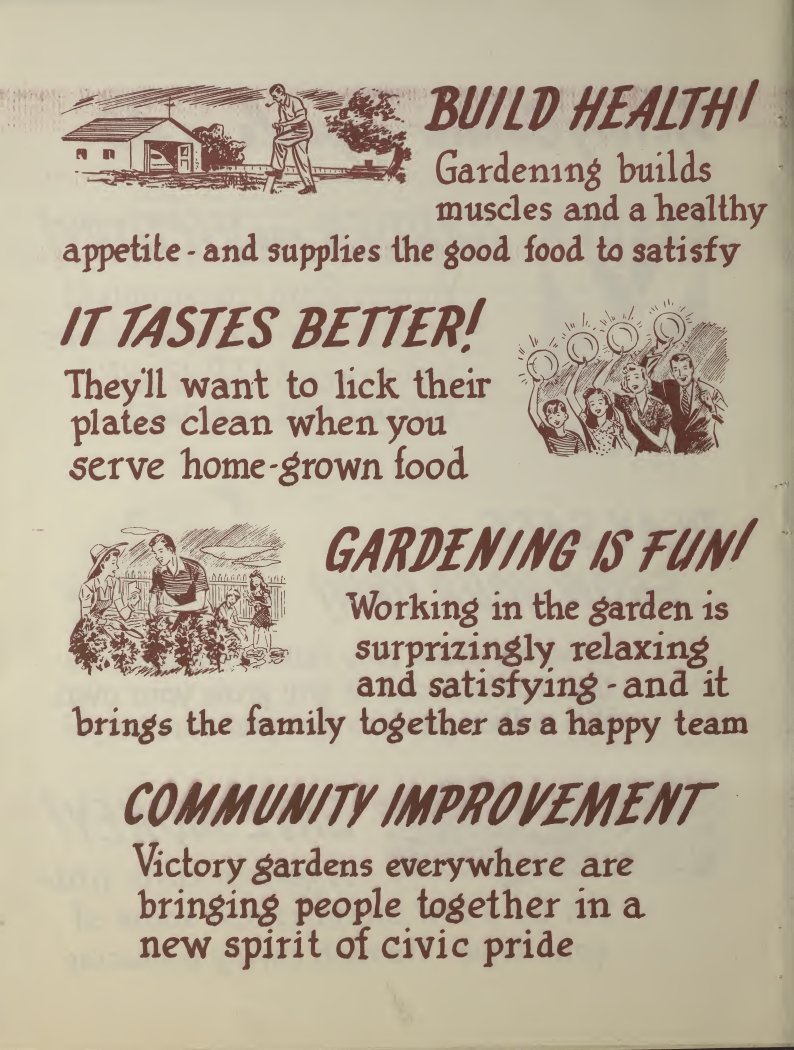In 1944, Americans set up 18.5 million small home & community gardens (up from 4.5 million in 1939) to grow food for the war. They called them Victory Gardens.
Many were run by first-time gardeners on plots with poor soil, yet they still produced over 40% of the nation's vegetables that year.
And while war was one of the key motivations for government promotion, more people identified economic reasons as their primary motivation. The health, stress relief, taste, and morale boosting benefits probably didn't hurt either.
Kind of remarkable to see how quickly an entire nation (when motivated) can nearly replace their reliance upon large-scale food production.
What would a 21st century version of victory gardens look like?


If done well, probably not much different than the victory gardens.
i figure there are new ways to automate watering, and maybe harvesting in the near future. both can be done at large scale already, and neither were available in WW2.
That's pretty cool.
Bitcoin gardens here we come.